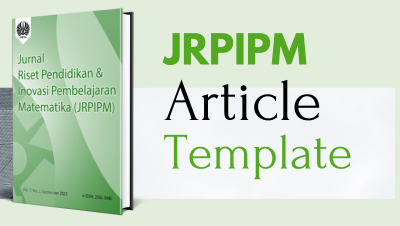Developing Written Mathematics Communication through Solving Analogous Problems
DOI:
https://doi.org/10.26740/jrpipm.v4n2.p79-92Keywords:
written, mathematics communication, analogous problems, problem-solvingAbstract
Developing mathematics communication, especially in writing is needed considering that communication is one of the objectives of learning mathematics which can describe students understanding so that effective strategies are needed to develop it. One of problem solving strategies that can measures written mathematics communication is solving the analogous problem. This research aims to describe the analogous problem in developing mathematics communication especially in written communication. This research was a qualitative type through a student-written test about solving target problem using analogous problems and interview. The result showed solving analogous problems gave students understanding to be able to do the target question correctly also easier than before and it effected students could communicate the correct solutions accurately, effectively and completely in writing. So it can be said that solving analogous problems develops written mathematics communication ability of student effectively.
References
S. Posamentier, A S and Krulik, Problem Solving Strategies for Efficient and Elegant Solutions : A Resourches for The Mathematics Teacher. California: CORWIN PRESS INC, 1998.
Downloads
Published
How to Cite
Issue
Section
License
Copyright (c) 2021 Jurnal Riset Pendidikan dan Inovasi Pembelajaran Matematika (JRPIPM)

This work is licensed under a Creative Commons Attribution 4.0 International License.
 Abstract views: 327
,
Abstract views: 327
, PDF Downloads: 85
PDF Downloads: 85






